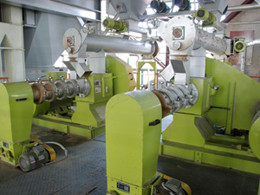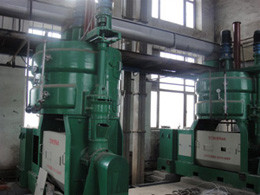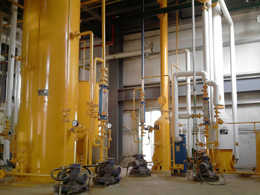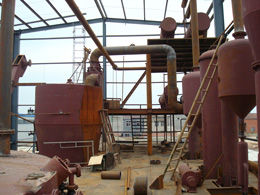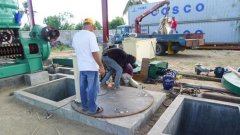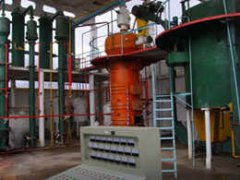Castor Oil Production
Castor seed is grown commercially on plantations but also harvested from wild plants. The seed must be hulled after harvesting. This can be done laboriously by hand or, more commonly, by machine. Small-scale hand-operated dehullers are available.
The seeds contain about 50 percent oil by weight. To extract the oil they must be crushed and pressed with hydraulic or continuous screw pressing at high or low temperature. High temperature hydraulic pressing yiealds 80 percent of available oil. Further in the solvent extraction plant much of the remaining oil can be released.
Extraction Section Of Castor Oil Production
Extraction of oil from castor oil plant seeds is done in a manner similar to that for most other oil seeds. The ripe seeds are allowed to dry, when they split open and discharge the seeds. These seeds are cleaned, cooked and dried prior to extraction. Cooking is done to coagulate protein (necessary to permit efficient extraction), and to free the oil for efficient pressing.
The first stage of oil extraction is pre-pressing, using a high pressure continuous screw press – called the expeller. Extracted oil is filtered, and the material removed from the oil is fed back into the stream along with fresh material. Material finally discharged from the press, called cake, contains 8 to 10 percent oil. It is crushed into a coarse meal, and subjected to solvent extraction with hexane.
Purification Section Of Castor Oil Production
Once the oil has been extracted from the seed, it is necessary to remove impurities from the oil.The oil is essentially a pure triglyceride, and contains almost 90% of glyceryl tricinoleate. It is the ricinoleic triglyceride that is needed in order to produce high quality castor oil.The steps to refining the crude oil include:
1. Settling and Degumming of the oil - Done to remove the aqueous phase from the lipids, and to remove phospholipids from the oil.
2. Bleaching - Bleaching results in the removal of coloring materials, phospholipids and oxidation products.
3. Neutralization - The neutralization step is necessary to remove free fatty acids from the oil. This can be done in one of two ways: (a) Alkali (Chemical) or (b) Steam Stripping (Physical) means.
4. Deodorization of the oil - Deodorization results in the removal of odour from the oil
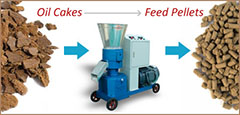



Want to set up a mini mustard oil mill of your own ? With the rapid ...
Mustards are part of the oilseed family and are regarded both as a s...
Interested in begin a small size corn oil extraction plant but dont ...
Do you want to make the edible rice bran oil at from using your mill...

